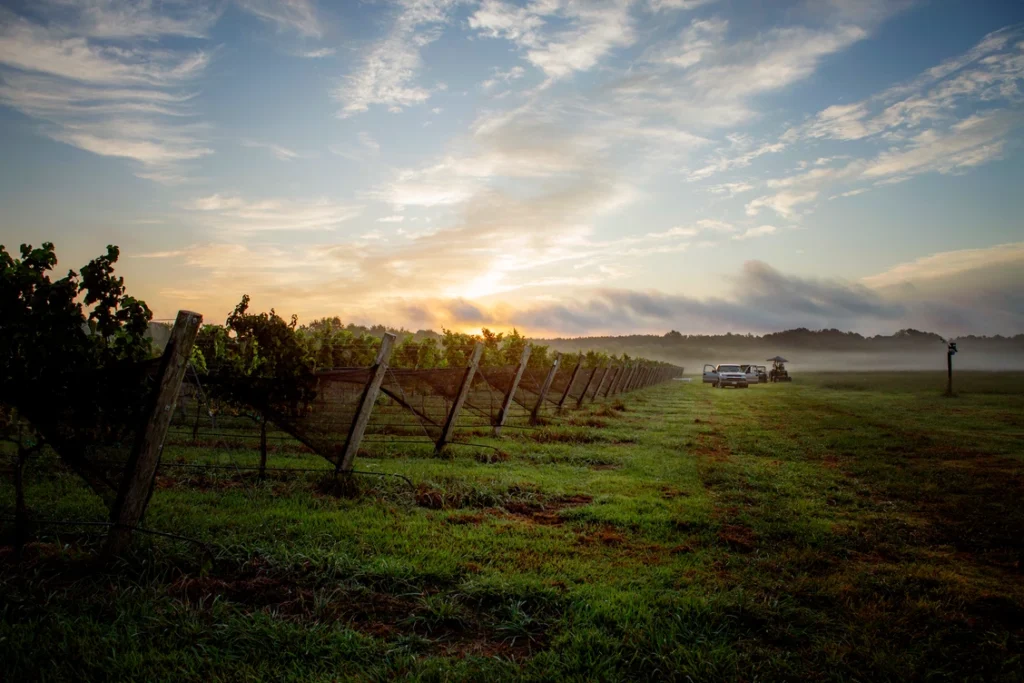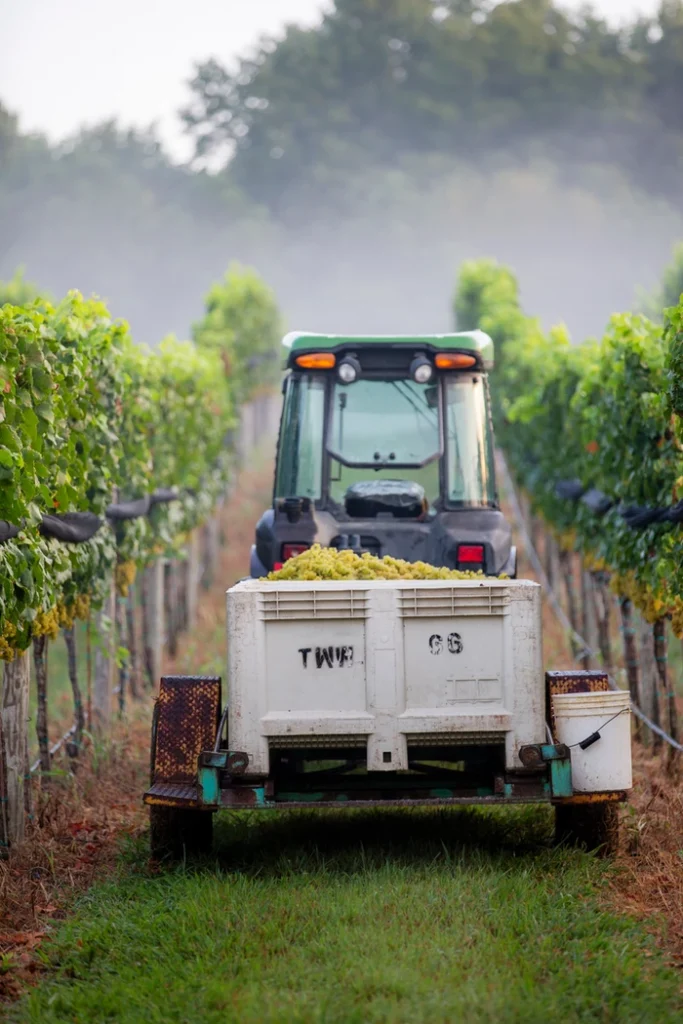A Toast to Virginia’s Eighth AVA and the Williamsburg Winery for Making it Happen
The Commonwealth of Virginia has an official new wine region thanks to the Williamsburg Winery continuing to be a trailblazer on behalf of the industry.
The Alcohol and Tobacco Tax and Trade Bureau (TTB) announced Tuesday that the Virginia Peninsula is an approved American Viticultural Area (AVA), a distinction only awarded to areas with distinct geographic features. An AVA is a geographically defined grape-growing zone with boundaries determined by the U.S. government.

The Williamsburg Winery spearheaded the effort to add an eighth AVA fully within the Commonwealth.
“This is groundbreaking news for Virginia wine,” said Williamsburg Winery founder Patrick Duffeler, who regards the announcement as “a ratification of the formality of what we are.”
“I have a very specific recollection of sitting in my office with Matthew working on plans for the descriptive phase of what the Virginia Peninsula is,” he said. “We wanted to do this 10 years ago, but we finally applied on behalf of all the wineries in this region to make it official about seven years ago.”
The Virginia Peninsula AVA final rule was published in the Federal Register Aug. 25, 2021. The rule will go into effect on Sept. 24, 2021.
The 673,059-acre Virginia Peninsula encompasses the counties of James City, York, New Kent and Charles City in addition to the cities of Poquoson, Hampton, Newport News and Williamsburg. Bound by the James and York Rivers, the narrow AVA is roughly 50 miles in length and varies from 5 to 15 miles in width.
Virginia’s newest AVA is distinguished by its subtropical climate, extended growing season and maritime features, including sedimentary soil. Similar to Bordeaux, France, the Virginia Peninsula AVA is surrounded by bodies of water that assist in moderating the climate.

Five wineries are located on the Virginia Peninsula AVA, including the largest, the Williamsburg Winery, which took on the arduous task of collecting data to apply for the AVA. Climate, elevation, geology, latitude, sun exposure, soil composition and topology, everything that contributes to how grapes are grown, must be scrutinized before a petition is submitted to the TTB.
“I remember years ago studying geological survey maps trying to figure out where we would start,” said Matthew Meyer, Winemaker for the Williamsburg Winery.
The detailed petition even needed to include what’s called “name evidence,” or examples of the proposed AVA having a recognized name. In addition to multiple websites and various businesses and organizations using the term “Virginia Peninsula,” the winery included a journal article titled “Place Names on the Virginia Peninsula” from 1954 in its petition.
“This news validates that Virginia continues to be up and coming in the wine world,” Meyer said. “It validates that we have a unique terroir here and we have unique growing conditions. It’s a really big deal for labeling. We will be able to label our wines as ‘Estate Grown’ and ‘Estate Bottled.’’’
Wines that use that wording on their labels must designate an AVA, and both the vineyard and winery must be located there. From the first crush to the last bottle, 85% of the wine inside must come from that AVA.
A sense of place or a wine’s pedigree is significant to vintners and many consumers.
Of course, Duffeler realized the potential for the Virginia Peninsula back in the early 1980s when he explored the idea of opening the first winery in Williamsburg. The Belgian-born business executive is also a pioneer in motor racing after creating the inaugural Marlboro Formula One car racing team. When he transitioned to the wine industry, initially in Burgundy, and after buying the 300-acre farm he named Wessex Hundred, he was met with skepticism.
“I can remember when there were people telling me, ‘It’s rather wild to think of building a winery in Williamsburg. That sounds like something of a TV show,’” Duffeler said.
The emergence of the wine industry was still a novelty back then, but the Williamsburg Winery ploughed forward on the site of the first settler’s landing where Capt. John Smith noted the grapes growing in the trees.
The Williamsburg Winery opened in 1985 and had its first harvest in 1987. Two years later, the Chardonnay won the Virginia Governor’s Cup Award. The winery earned another Governor’s Cup Award in 2014.
Today, the Williamsburg Winery produces approximately 40,000 cases a year. Most recently, the 2019 Wessex Hundred Viognier received 93 points and a Gold Medal in the 2021 Winemaker Challenge International Wine Competition. The 2019 Viognier is made from grapes grown in the Virginia Peninsula AVA.
“We opened our doors for the sale of wines in 1988 and within two or three years, we became the largest winery in Virginia,” Duffeler said. “Thirty years later, it’s part of our destiny to become a signature operation. I’m looking at the next 10 years and want to grow the winery even further.”
The other seven AVAs that make their home in Virginia are Middleburg, Monticello, Shenandoah Valley, North Fork of Roanoke, Rocky Knob, Northern Neck George Washington’s Birthplace and Eastern Shore. In addition to the Williamsburg Winery, the other wineries that reside on the Virginia Peninsula AVA are New Kent Winery, Upper Shirley Vineyards, Gauthier Vineyard and Saudé Creek Vineyards.
